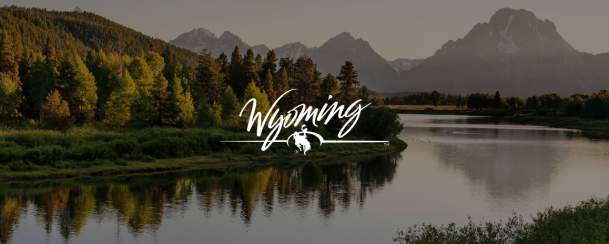From flowery springs to snow-kissed winters, visitors flock to Wyoming in hopes of glimpsing a view of wildlife. Often, visitors leave satisfied by scenes of pronghorns prancing through prairies or of bears nibbling on berries.
Still, glimpses of common animals are not the only draw to the state’s wonderful wilderness. For something a little different, visitors spend time in Douglas, Wyoming, learning about the noteworthy jackalope. First created in 1934, Ralph and Doug Herrick combined a taxidermied jackrabbit and a deer’s antlers to piece together a version of this one-of-a-kind creature.
Since then, the lore surrounding this little animal has taken on a life of its own, resulting in folks from near and far coming to find out more and possibly see a jackalope in the wild.
So What is a Jackalope, Anyway?
Even the most savvy animal lovers may be asking themselves: what is a jackalope? The answer you get depends largely on who you ask.
Ralph Herrick once told the New York Times that creating the first known iteration of the jackalope was just another day on the job, making a jackrabbit trophy with the clever twist of a set of antlers and selling it with other taxidermied goods. Popularity unexpectedly spread west, and that creative inspiration led to significant gains for the Herrick brothers, who found a whole new business angle in these cute and curious creations.
But as public interest grew, so did mystique: what is a jackalope, really? Was it just the handiwork of two sibling taxidermists from Douglas? Residents began to say otherwise, reporting sightings of the tiny animal around town. Word spread like wildfire, and the city became a boon for visitors from across the country who hoped to catch a glimpse of this creature.

The Herrick’s original creation was stolen from a Douglas hotel in the late 1970s, never to be seen again. Today, another version continues to gain interest from visitors from its mounted home in the Wyoming Pioneer Museum. Due to the jackalope trophy’s creation in Douglas, the town has now officially been dubbed “Jackalope City,” and is a prime destination for those hoping to see a real jackalope in the wild.
That title is an honor that they take seriously. In fact, during Wyoming’s 100th anniversary of statehood in 1990, Douglas residents dedicated Jackalope Square to the city’s center. An eight-foot jackalope statue stands guard over the area’s pavilion and lawn. In the town square, wonderful activities like the Jackalope Big Summer Block Party and Jackalope Square Farmers Market occur every year, providing visitors and residents a reason to celebrate.
Jackalope Myths & Mysteries
Oral tradition has played its part in curating various historical accounts of the jackalope, and those who firmly believe that the animal is real may not agree on anything else about it. Some say that the animal is elusive and shy, hiding in packs scattered about the wilderness in Wyoming and South Dakota, while others believe it is long extinct.
Somewhere in the middle lies the myth that they don’t breed outside of lightning storms, limiting their population and making them hard to find. Their specific size and color are also up for debate, but those who claim to have seen a jackalope in the wild say they are about 5 pounds with a traditional wild rabbit’s brown fur and antlers the size of a small deer’s.

The Herricks’ original trophy is widely viewed as one of the first monuments to the creature (although some earlier paintings may suggest its existence). Still, many believe the first jackalope in Wyoming was found by Roy Ball, a fur trapper in the early 1800s. This belief appears to have been disproven. Roy Ball actually purchased the first jackalope and displayed it in the hotel he owned in Douglas until it was later stolen, but hey, why ruin the fun?
Some believe the jackalope possesses magical powers, from mimicking human sounds (like songs being sung) to running at speeds of up to 90MPH. Others tout the dangers of getting close to them in the wild, explaining that their swift horns and powerful bite can easily hurt anyone they view as a threat (but don’t worry — they are typically shy.)
Some suggest their milk has potent healing properties, while others say the only way to catch one is with a spot of whiskey. Whatever the case, you are likely to encounter folks with their own stories of spotting a jackalope in Wyoming.
Finding Jackalope of Your Own
By now, you know that the aloof nature and potential danger surrounding the jackalope make it a tough animal to find, but that makes the chase all the more worthwhile. Visitors to the Douglas community are encouraged to stop by Douglas Railroad Museum & Visitor Center to obtain a jackalope hunting license. Stipulations are outlined in the license and includes the date and time visitors may hunt — June 31st from 12-2 am.
With that secured, you’ll be on your way to searching for the state’s most mysterious resident. Road signs around Douglas remind you to beware of these furry friends (or foes) as they could turn up where you least expect them. Think you spotted one? Those lucky enough to encounter a jackalope in Wyoming should share their experience on social media using #JackalopeCity.
Beyond that, visitors should keep their eyes open around other areas of the state as jackalopes have hopped their way into locations like Terry Bison Ranch and Country Store and World's Largest Jackalope Exhibit Country Store in Dubois.
For more information regarding jackalope, be sure to visit Converse County’s informative website.

